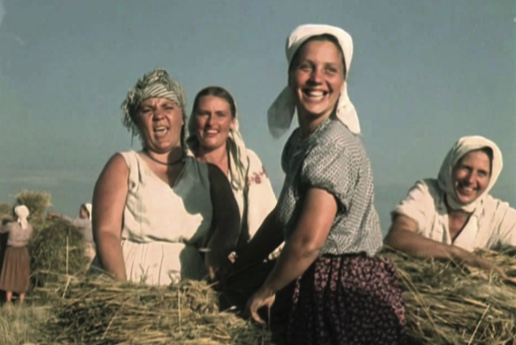
If you are a dedicated fan of movie musicals, you have probably been tempted to venture beyond the realm of Hollywood’s golden era to explore classic musicals from other countries like France (The Umbrellas of Cherbourg, 1964), Germany (The 3 Penny Opera, 1931) or England (Evergreen, 1934). You would certainly have no trouble discovering top rated favorites from India which produces between 1,500 to 2,000 Bollywood movies a year, most of which include at least three to five musical numbers. It might be harder though to dig up a famous film musical from countries as diverse as…say, Sweden, Japan or Egypt…but they definitely exist and there are more than you would think. What you probably haven’t seen is a socialist musical from Russia or any of its satellite countries during the Communist regime. There’s a reason for that. Those films weren’t exported outside Iron Curtain countries during that era but you can experience a highly entertaining sampler of the genre in East Side Story, a documentary on Marxist musicals that premiered in U.S. theaters in 1997.

Musicals were a rarity in Russia cinema. The more prevalent genres were various forms of agitprop in the guise of historical epics, war films, literary adaptations or dramas steeped in Socialist messaging. In all, some forty or so musicals were produced between the early 1930s and early 1970s, the period covered in East Side Story (clips from 23 films are featured). Of course, Russia no longer exists today. It officially became the Soviet Union in December 1991 and is now an autocracy under the control of Putin. Yet, during the peak years of Russian filmmaking in the 20th century, detractors would often jokingly define the national cinema as movies about a farmer and his tractor or some variation. The stereotypes were sometimes true as demonstrated by clips from Tractor Drivers (1939) and similar films but the musical genre was unique in many respects.
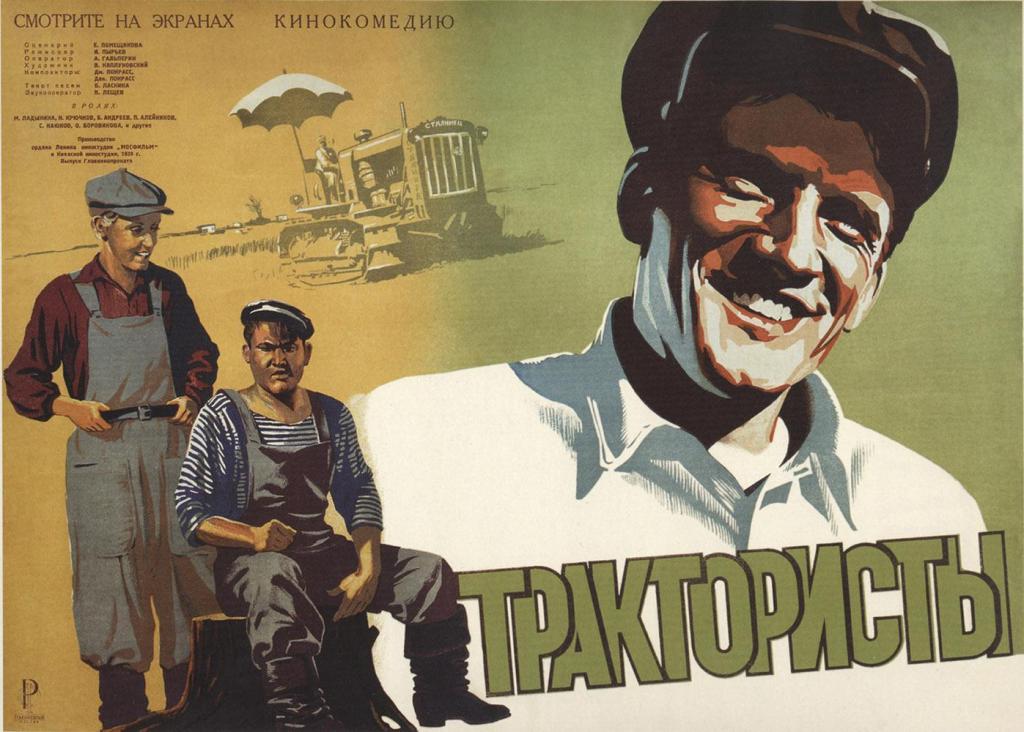
Directed by Dana Ranga, who was born in Romania, East Side Story tantalizes you with an opening array of wonderfully bizarre musical sequences from various movies such as a musical homage to a coal press sung by worker drones before backtracking to the early beginnings of the socialist musical. It was Lenin who believed cinema was the best way to reach the largest number of people so why not use the musical genre as a way to deliver propaganda in a more entertaining format? Grigori Alexandrov is credited as the first director to attempt such a thing with The Jolly Fellows (1934), which was inspired by a trip he made to Hollywood with celebrated filmmaker Sergei Eisenstein (they worked together on 1932’s Que Viva Mexico!). Designed as a light musical comedy mixing broad humor with musical numbers, The Jolly Fellows was promptly banned by the censors who deemed it the sort of frivolous escapism you would expect from a capitalist society. General audiences who saw it in a preview, however, loved it and so did Stalin who gave it his blessing and even awarded Alexandrov a military medal for his efforts.
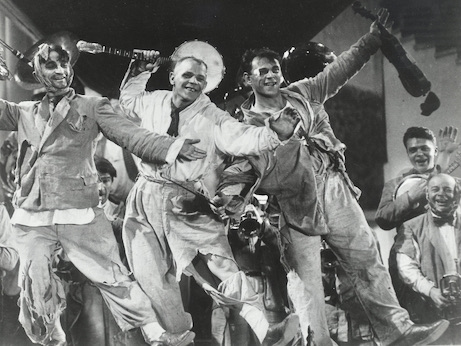
Filmmaking peers of Alexandrov thought he was a fool for making The Jolly Fellows. If Stalin had been displeased, he might have had the director executed, just as he did with more than roughly 14 million of his own countrymen during the Great Purge between 1936 and 1938. Instead, Stalin gave Alexandrov the green light to make another musical, but this time the much-feared Russian leader contributed some ideas of his own to the script. The result was Volga-Volga (1938), a musical comedy set on a steamboat traveling up the Volga River which carries a small group of rural musicians who hope to win a win at the Moscow Musical Olympics. Clips from the film resemble a Marxist version of 1933’s Tugboat Annie with the sort of broad comedy typical of a Mack Sennett short yet it was infused with such a strong sense of nationalist pride that Stalin loved it and saw it more than a hundred times. He even gifted FDR with a print of the film when they first met.
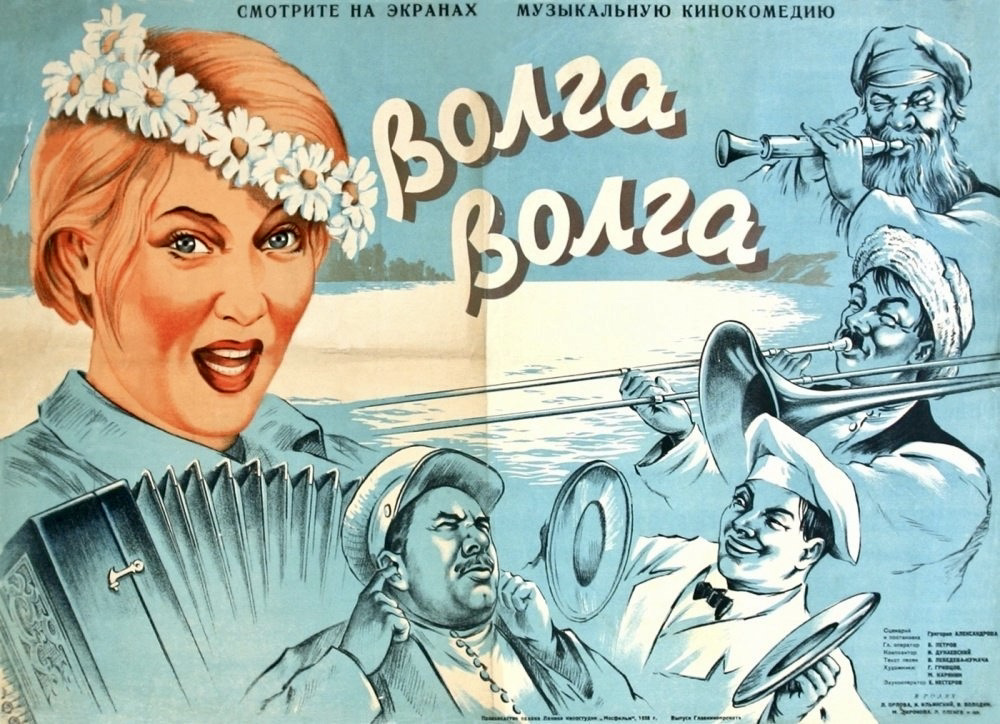
East Side Story becomes much more lively and amusing when it chronicles some of the productions made during the 1940s such as Ivan Pyrieu’s The Swineherd and the Shepherd (1941) aka They Met in Moscow. Marina Ladynina, the star of the film, plays a rural peasant girl who is sent to Moscow to attend an All-Union Agricultural Exhibition. Ladynina, who specialized in playing the iconic Russian farm girl, was married to Pyrieu and the clip featured is an elaborate tracking shot that follows the heroine down a forest path as she sings to a large herd of pigs who race back and forth around her feet. Like most of the Marxist musicals from the forties, The Swineherd and the Shepherd is a celebration of farm life and hard work with Ladynina singing, “Hey piggies! Time to eat. Come on out of your little pens, run, run, run. Come to your trough and have a little meal, hurry, hurry, hurry up.” Ok, it’s not Cole Porter but audiences loved it because it was a welcome upbeat change compared to the serious socialist dramas they were being fed by the state run film industry.
Other highlights from this era include Cossacks of the Kuban River (1946), with its choreographed musical numbers of men and women harvesting wheat with scythes and pitchforks or shoveling grain with athletic vigor, and The Bright Path (1940). The latter is particularly intriguing for its depiction of a female factory worker who becomes an all-purpose mechanic and rises through the ranks to become a team leader. The clip shown looks like a recruitment poster for Rosie the Riveter come to life albeit with a Marxist slant. Another aspect of the WW2 musicals was a glorification of patriotism as shown in At 6 pm at the End of the War (1994), which depicts a rain-drenched peasant girl singing to her departing soldier/boyfriend, “Be strong in the awful battle, fight for our Russian land, and don’t forget Moscow and your lover, come back to them victorious!”

My favorite section of East Side Story is when the documentary examines the Cold War era musicals of the fifties and sixties when increased production values, color film stock and more adventurous creative approaches resulted in some wildly stylized musicals such as New Year’s Punch (1960) with its futuristic set design. My Wife Wants to Sing (1958), the tale of a department story manager who longs to be a professional singer, has a surprising feminist slant with the main character demanding to earn her own living because “it’s the law.” Although the state film censors condemned My Wife Wants to Sing as a bourgeoisie fantasy, the soundtrack album became a hit before the film was even released. Bowing to public pressure, the film was eventually released after a few cuts were made and became a huge hit in Russia and East Germany.
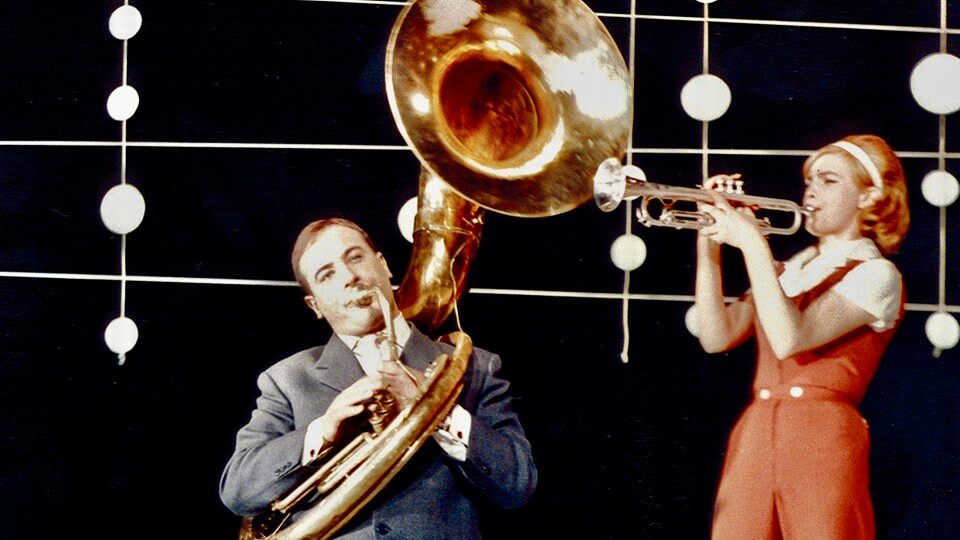
Gottfried Kolditz’s Midnight Revue (1962), one of the more innovative and colorful entries from this period, serves up a novel plot twist. A group of filmmakers are kidnapped and forced to make an entertaining musical and the result looks like a Russian version of The Band Wagon with its ballet-like choreography and lively nightclub sequences. Kolditz bounced back with another popular musical in 1964, The Lovable White Mouse starring Karin Schroder, East Germany’s answer to Doris Day. The simple plot about a romance between a traffic cop and a motor scooter-riding working girl is an excuse to stage elaborate musical numbers such as a surrealistic beauty salon fantasy.
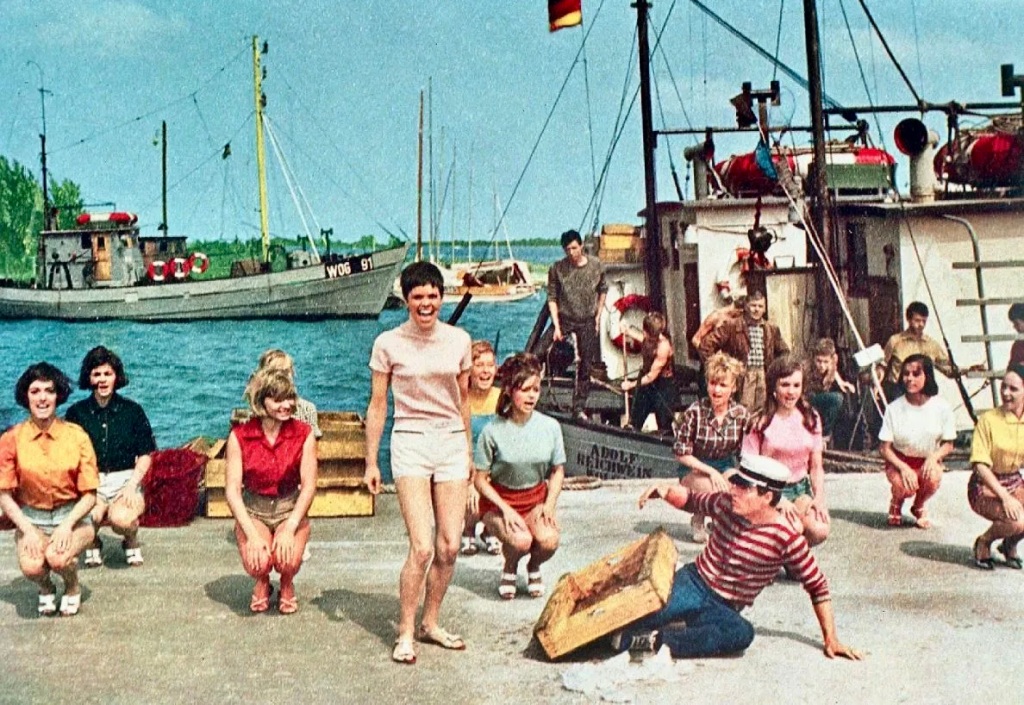
Since pop music had an undeniable impact on youth culture in the late sixties, East German filmmaker Joachim Hasler decided to target younger audiences with Hot Summer (1968), a Beach Party-like imitation with a group of vacationing male and female students meeting up and sharing accommodations at a Baltic Sea retreat. The film was a huge hit due in large part to the casting of popular music duo Chris Doerk and Frank Schobel in the lead roles (they were married in real life) but financial success was not an objective for the state supported film industry. Ideological messaging was always the core reason for making movies in the Cold War era and by the time Hasier was allowed to make No Cheating Darling (1973), a follow-up to Hot Summer reteaming Doerk and Schobel, the film industry was plagued by production problems such as electrical outages and dwindling resources.
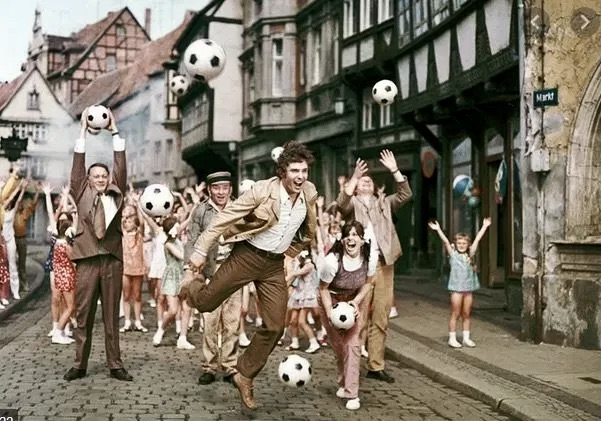
Clips from No Cheating Darling with its dated hair styles and clothes and production numbers featuring West Side Story-inspired choreography is enjoyably campy but it was the last gasp of the Socialist musical. The state run film industry decided musicals were too expensive to make and also too frivolous to work as effective propaganda vehicles anyway.
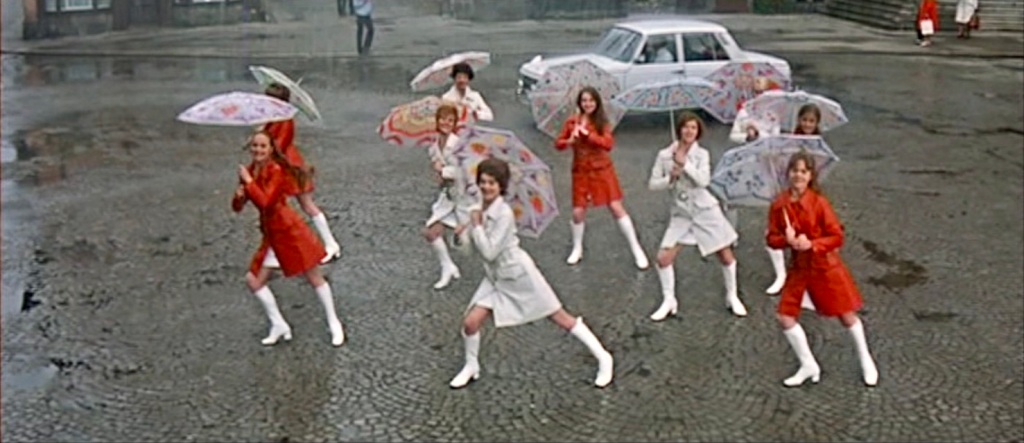
East Side Story crams a lot into its 78 minute running time but there are a few minor complaints. Director Dana Ranga provides the narration but her voice is rather robotic and humorless. Much better are some of the former Russian film industry experts who show up for informative if perfunctory commentary. There is also an awkward narrative device of periodically inserting official statements from the party film censors who are represented by a stern-looking female trio dressed in identical garb. Still, the documentary is an extremely fun and engrossing introduction to this long-hidden chapter in Russian cinema and will probably encourage you to seek out some of the featured films.
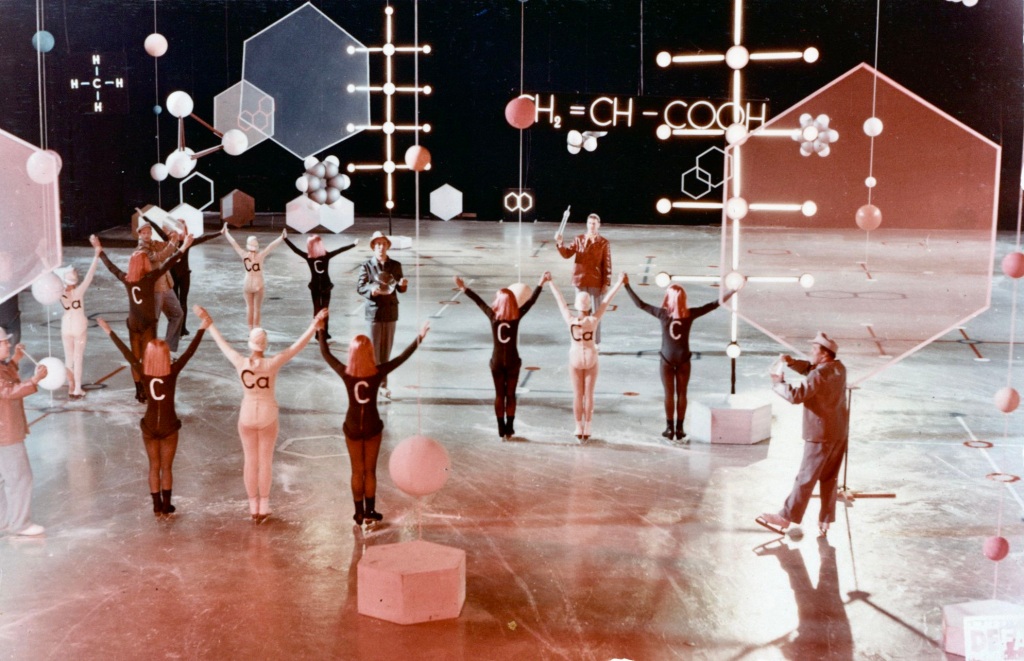
Midnight Revue was recently released on DVD in a new restored transfer by the DEFA Film Library. Hot Summer was originally released on DVD by First Run Films and you might be able to still find copies on the internet. Volga-Volga is currently streaming on Prime and other titles like The Jolly Fellows and The Lovable White Mouse are available in original language with English subtitles from various sources. Unfortunately, East Side Story, which was released on DVD by Kino Video, is now out of print although copies for sale still exist. If ever a movie needed remastering on Blu-ray, this is it.
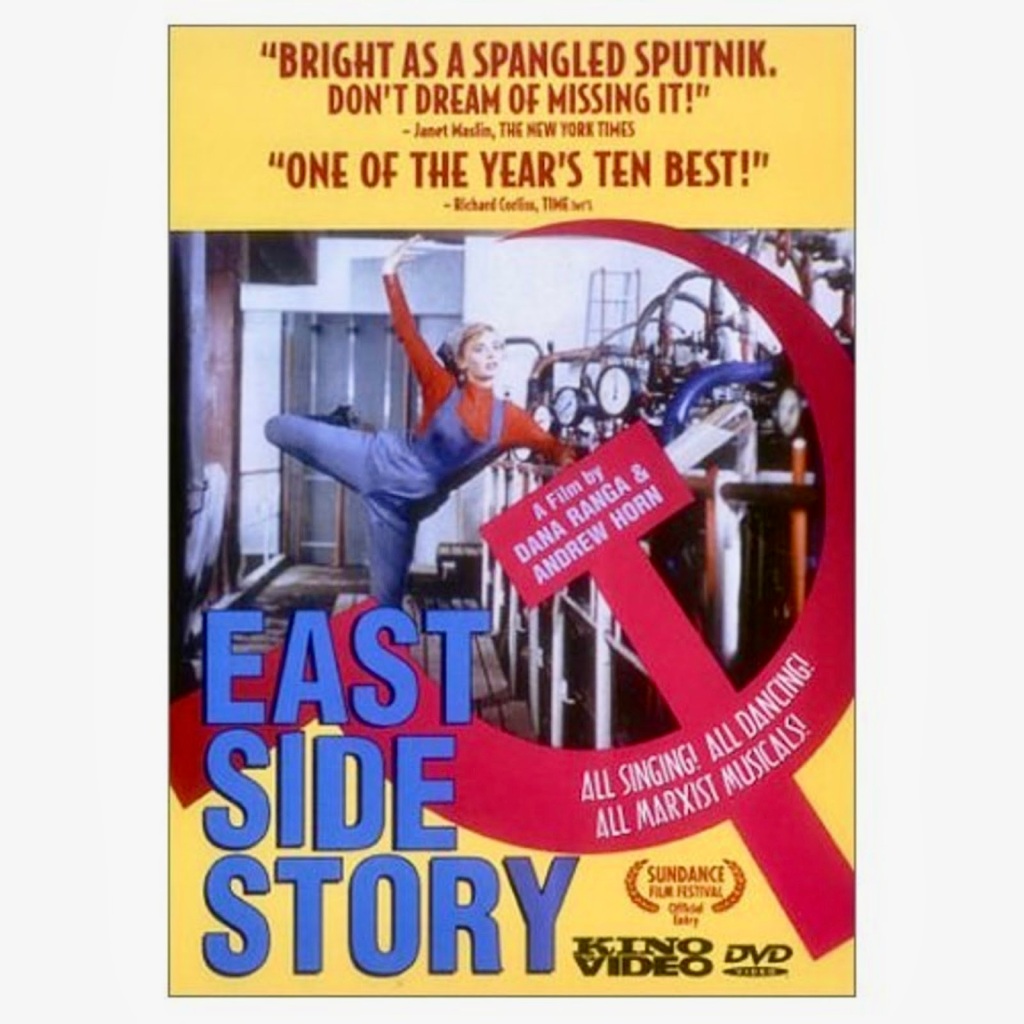
Other links of interest:
https://americas.dafilms.com/director/9100-dana-ranga
MUST SEE: Cossacks of the Kuban
https://ecommerce.umass.edu/defa/


